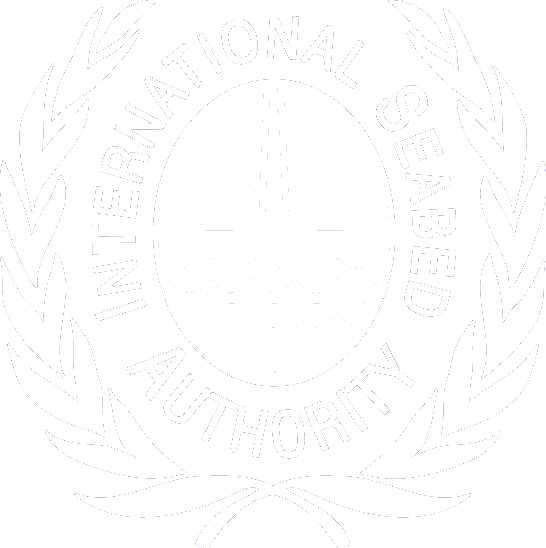Exploration Contracts
The Beginning
Modern oceanography began as a field of science just about 150 years ago, in the late 19th century. The first scientific expedition to explore the world’s oceans and the seafloor was the Challenger Expedition, from 1872 to 1876, on board the British three-masted warship HMS Challenger. Among the Challenger Expedition’s discoveries was one of the deepest parts of the ocean — the Marianas Trench in the Western Pacific, where the seafloor is more than 8 km deep. The expedition also revealed the first broad outline of the shape of the ocean basin, including a rise in the middle of the Atlantic Ocean, now known as the Mid-Atlantic Ridge. In addition, scientists compiled the first systematic plots of ocean currents and temperatures.
The first discovery of polymetallic nodules also took place during this historic voyage of Challenger. On 7 March 1873, the dredge hauled up on its deck ‘several peculiar black oval bodies which were composed of almost pure manganese oxide.’ But it was not until a century later that economic interest in the deep-ocean polymetallic nodules was developed, which subsequently led to the formation of consortia in Germany, the United States, Canada, Japan, France, Belgium, Italy, among others, in the 1960s and 1970s. These consortia aimed to develop resource assessments and extraction technologies for polymetallic nodules in the Clarion-Clipperton Zone in the central Pacific Ocean.
With the entry into force of UNCLOS in 1994 and the establishment of ISA in 1994, exploration activities for mineral resources in the Area began to be regulated under exploration contracts. Originally, exploration activities were predominantly undertaken by national agencies until 2010, when private companies became involved, and a polymetallic-nodule-mining industry was born.
Contracts
ISA has entered into 15-year contracts for the exploration for polymetallic nodules (PMN), polymetallic sulphides (PMS) and cobalt-rich ferromanganese crusts (CFC) in the deep seabed with 22 contractors.
| CONTRACTS | |||||
|---|---|---|---|---|---|
| CONTRACTOR | PMN | sulphides | CFC | Total | |
| 1 | Interoceanmetal Joint Organization | 1 | 1 | ||
| 2 | JSC Yuzhmorgeologiya | 1 | 1 | ||
| 3 | Government of the Republic of Korea | 1 | 1 | 1 | 3 |
| 4 | China Ocean Mineral Resources Research and Development Association | 1 | 1 | 1 | 3 |
| 5 | Deep Ocean Resources Development Co. Ltd. | 1 | 1 | ||
| 6 | Institut français de recherche pour l’exploitation de la mer | 1 | 1 | 2 | |
| 7 | Government of India | 1 | 1 | 2 | |
| 8 | Federal Institute for Geosciences and Natural Resources | 1 | 1 | 2 | |
| 9 | Nauru Ocean Resources Inc. | 1 | 1 | ||
| 10 | Tonga Offshore Mining Limited | 1 | 1 | ||
| 11 | Global Sea Mineral Resources NV | 1 | 1 | ||
| 12 | Loke CCZ (formerly UK Seabed Resources Ltd.) | 2 | 2 | ||
| 13 | Marawa Research and Exploration Ltd. | 1 | 1 | ||
| 14 | Ocean Mineral Singapore Pte. Ltd. | 1 | 1 | ||
| 15 | Cook Islands Investment Corporation | 1 | 1 | ||
| 16 | China Minmetals Corporation | 1 | 1 | ||
| 17 | Beijing Pioneer Hi-Tech Development Corporation | 1 | 1 | ||
| 18 | Ministry of Natural Resources and Environment of the Russian Federation | 1 | 1 | 2 | |
| 19 | Government of Poland | 1 | 1 | ||
| 20 | Japan Organization for Metals and Energy Security | 1 | 1 | ||
| 21 | Companhia de Pesquisa de Recursos Minerais S.A.* | 1 | 1 | ||
| 22 | Blue Minerals Jamaica Ltd | 1 | 1 | ||
| 19 | 7 | 5 | 31 | ||
*CPRM renounced its rights in relation to its exploration contract on 28 December 2021
Nineteen of these contracts are for the exploration for polymetallic nodules in the Clarion-Clipperton Fracture Zone (17) and Central Indian Ocean Basin (1), and Western Pacific Ocean (1). In addition, there are seven (7) contracts for exploration for polymetallic sulphides in the South West Indian Ridge, Central Indian Ridge and the Mid-Atlantic Ridge and five (5) contracts for exploration for cobalt-rich crusts in the Western Pacific Ocean.
Prior to the commencement of its programme of activities under the contract, each contractor is also required to submit to the Secretary-General a contingency plan to respond effectively to incidents arising from its activities in the exploration area.
Training: Each contractor is required to propose a programme for the training of nationals of developing States. As agreed with ISA, the training programme is incorporated into the contract as Schedule 3.
Annual Report: Each contractor is also required to submit an annual report on its programme of activities.




